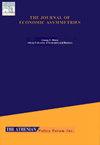能源价格波动下经济增长对可再生能源的不对称阈值效应
Q1 Economics, Econometrics and Finance
引用次数: 0
摘要
本研究使用面板平滑阈值回归分析了来自17个中东和北非(MENA)国家的数据,探讨了能源价格(EP)波动的不对称性如何影响可再生能源(RE)的发展,考虑到不同的经济增长率。研究结果表明,不同收入水平的居民收入波动对可再生能源发展的影响不同。在高收入国家,较高的gdp刺激了可再生能源的扩张,而在低收入国家,则阻碍了可再生能源的扩张。这些结果支持替代假说,表明较高的人均gdp鼓励向替代资源的转变,尽管只是在中东和北非地区的高人均gdp体制内。这一证据挑战了中东和北非地区“一刀切”能源政策的概念,强调了根据各国经济背景制定量身定制战略的必要性。高收入国家应优先取消补贴以激励可再生能源投资,而低收入国家则需要分阶段采取措施来维持经济稳定。该研究的更广泛含义延伸到全球能源政策,倡导平衡可持续能源转型与经济增长的差异化战略。本文章由计算机程序翻译,如有差异,请以英文原文为准。
Asymmetric threshold effects of economic growth on renewable energy in response to energy price fluctuations
Using a panel smooth threshold regression to analyze data from 17 Middle East and North Africa (MENA) countries, this study investigates how asymmetries in energy price (EP) fluctuations impact renewable energy (RE) development, considering varying economic growth rates. The findings reveal that EP fluctuations influence RE development differently across income levels. In high-income countries, higher EPs stimulate RE expansion, while in low-income nations, they hinder it. These results support the substitution hypothesis, indicating that higher EPs encourage a shift toward alternative RE sources, though only within the high-GDP per capita regime in the MENA region. This evidence challenges the notion of a one-size-fits-all energy policy for MENA, highlighting the need for tailored strategies based on individual countries' economic contexts. High-income nations should prioritize subsidy removal to incentivize RE investments, whereas low-income countries require phased approaches to maintain economic stability. The study's broader implications extend to global energy policy, advocating for differentiated strategies that balance sustainable energy transitions with economic growth.
求助全文
通过发布文献求助,成功后即可免费获取论文全文。
去求助
来源期刊

Journal of Economic Asymmetries
Economics, Econometrics and Finance-Economics, Econometrics and Finance (all)
CiteScore
4.80
自引率
0.00%
发文量
42
审稿时长
50 days
 求助内容:
求助内容: 应助结果提醒方式:
应助结果提醒方式:


